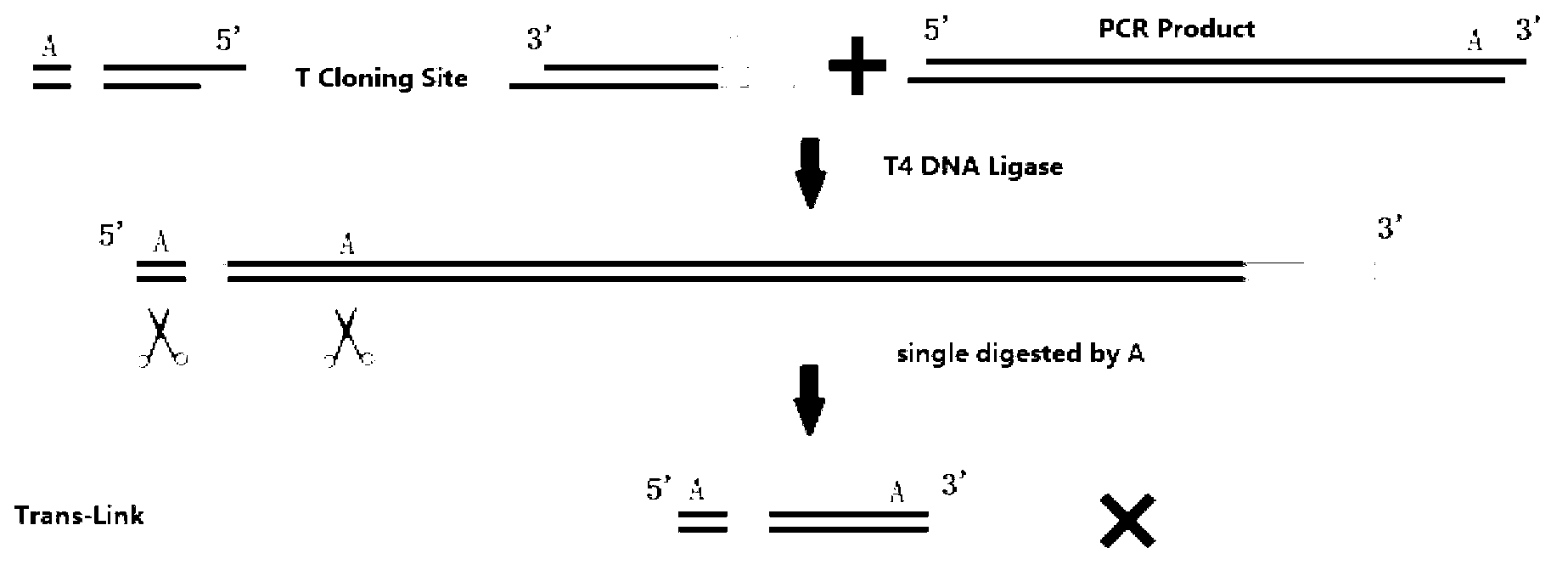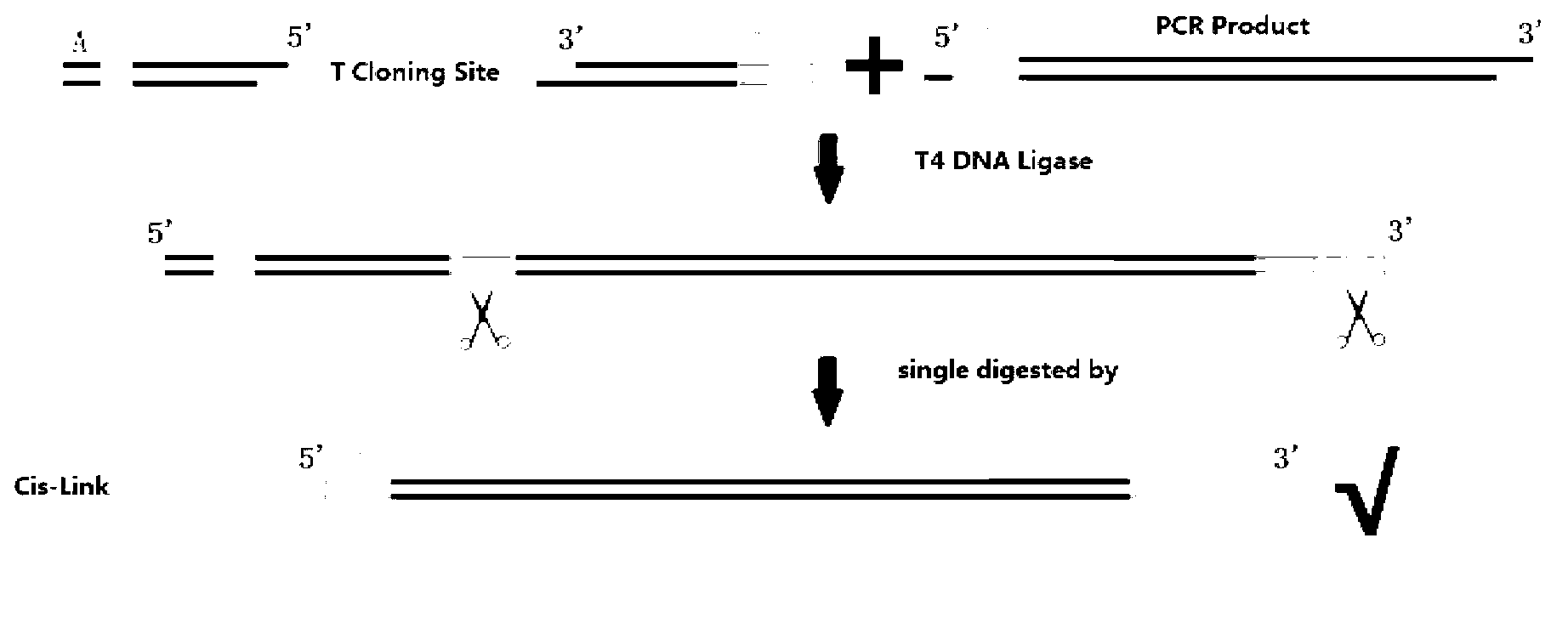Directional cloning method, transformation method of carrier and carrier T
A vector and directional technology, applied in the field of bioengineering, can solve the problem that T vector cannot be directional cloning, and achieve the effect of saving research time, high application value and improving success rate.
- Summary
- Abstract
- Description
- Claims
- Application Information
AI Technical Summary
Problems solved by technology
Method used
Image
Examples
Embodiment 1
[0068] Example 1: Construction of prokaryotic expression T-vector
[0069] By transforming the prokaryotic expression vector pQE-30a, a restriction cassette containing the kanamycin resistance gene with Xcm I endonuclease cut sites on both ends was designed, and other restriction cuts were added to both ends of the restriction cassette. Site, and then directional clone the restriction cassette containing the kanamycin resistance gene with Xcm I endonuclease sites at both ends by recombination technology to the corresponding restriction site on the pQE-30a vector, and the sequencing will be correct The recombinant plasmid was then cut with Xcm I endonuclease to cut the fragment with kanamycin resistance gene to form a linearized T-vector with protruding dT at both ends. Finally, human retinol binding protein (hRBP) was used to identify the expression function of the constructed T vector. After PCR, the DNA fragment of hRBP gene was ligated with T4 ligase and linearized T vector, a...
Embodiment 2
[0188] Example 2 Construction of yeast surface display T vector and its function identification
[0189] The sequence of the yeast surface display T vector pYD-T vector restriction cassette constructed in this example is as follows Figure 16 As shown, a restriction cassette with Xcm I endonuclease cutting sites at both ends was designed, and NheI, BamH I, NdeI, and Xho I restriction sites were added to both ends of the restriction cassette, and then recombined into Nhe I 、On the pYD-1 vector after XholI digestion treatment, cut the correctly sequenced recombinant plasmid with Xcm I endonuclease, and cut the fragment containing the yellow fluorescent protein gene to form two ends with Linearized T-carrier with prominent dT. Finally, the red fluorescent protein (RFP) was used to identify the expression function of the constructed T vector. The DNA fragment of the RFP gene was amplified by PCR and then ligated with the linearized T vector with T4 ligase, and then introduced into Sa...
PUM
 Login to View More
Login to View More Abstract
Description
Claims
Application Information
 Login to View More
Login to View More - R&D
- Intellectual Property
- Life Sciences
- Materials
- Tech Scout
- Unparalleled Data Quality
- Higher Quality Content
- 60% Fewer Hallucinations
Browse by: Latest US Patents, China's latest patents, Technical Efficacy Thesaurus, Application Domain, Technology Topic, Popular Technical Reports.
© 2025 PatSnap. All rights reserved.Legal|Privacy policy|Modern Slavery Act Transparency Statement|Sitemap|About US| Contact US: help@patsnap.com



